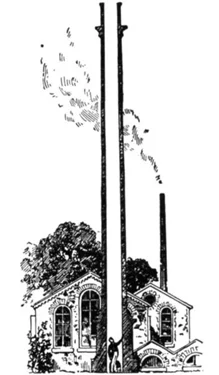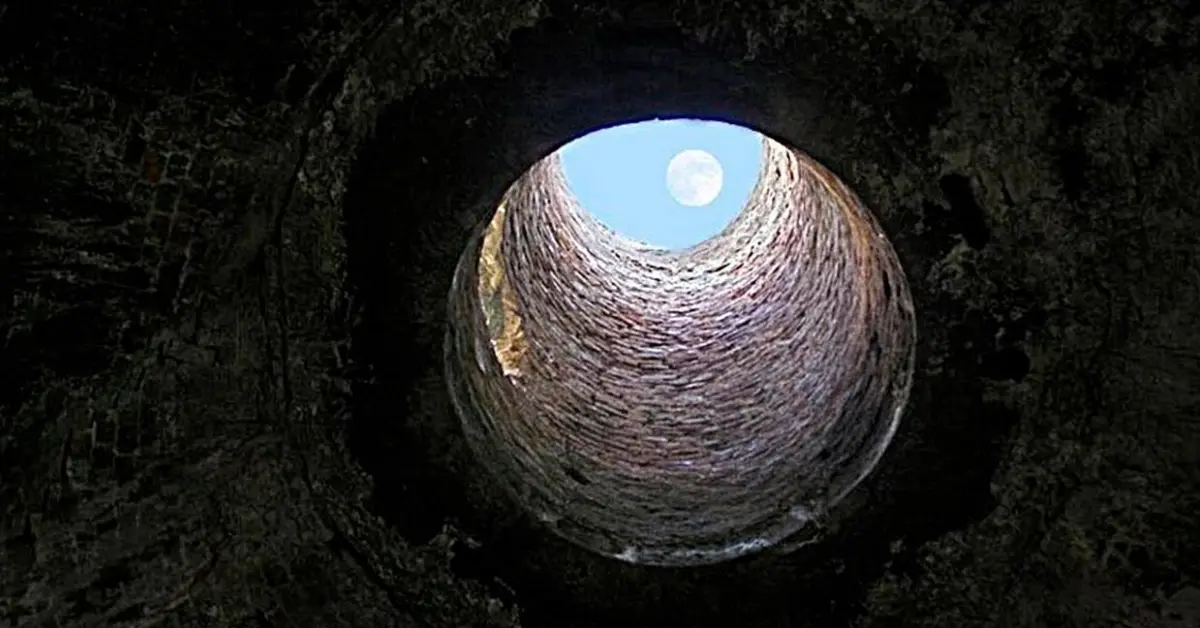It is generally accepted that celestial bodies, which the human eye cannot discern in the daytime sky, are visible from the depths of a dark well. We checked if this is true.
This interesting natural phenomenon has been known since ancient times. Aristotle in his work "On the Origin of Animals" wrote: “This does not happen for the same person at the same time: someone who, shading his eyes with his hand or looking through a tube, still does not perceive differences in color, will see better in the distance: such people sometimes see stars from holes and wells.” Pliny the Elder clarified, that we are talking specifically about observing stars during the day, when they look disproportionately smaller. The effect was not forgotten in much later times. Thus, the German astronomer of the 17th century Christoph Scheiner wrote: “I was told by one very educated and trustworthy Spaniard that everyone in Spain knows that in open deep wells the sky and stars, shining through reflection, as in a mirror, are very clearly visible even at noon and that he himself often saw this with his own eyes...” His French colleague Francois Arago devoted an entire chapter to this topic in his book "Commonly understood astronomy" (1861). There he, in particular, refers to the famous scientist John Herschel, who reported: “Bright stars passing through the zenith may even be visible to the naked eye by persons located at the bottom of a deep and narrow depression, such as a well or an ore mine.”

Naturally, many physicists and astronomers of the past tried to test this statement experimentally - this method, if successful, could immediately put an end to the debate. German naturalist and traveler of the 19th century Alexander Humboldt with his students tried it look at the stars through a chimney 230 feet (70 m) high and with a hole 16 feet (5 m) in diameter - to no avail, even binoculars did not help. A similar result awaited him after descending into the deep mines of Siberia and America. People did not give up their attempts in the 20th century. So, in 1978, Komsomolskaya Pravda correspondent Leonid Repin wrote: “They say that even in broad daylight you can see the stars in the sky if you go down into a deep well. One day I decided to check if this was true, I went down into a sixty-meter well, but I still couldn’t see the stars. Just a small square of dazzling blue sky.” In 1992, the Skeptical Inquirer magazine wrote about its similar failure told American tester Richard Sanderson.
However, practical experiments also have their drawback: in the case of local failure, one cannot give a definite answer “no”, because there may be many little things that need to be taken into account to achieve success. As for the theory, for example, the aforementioned Francois Arago believed his famous predecessors Herschel and Scheiner, and offered the following justification: “It seems to me that this phenomenon can be explained very simply. The visual angle of our naked eye exceeds 100°, therefore, a stationary eye facing the vault of heaven receives rays from all points in the atmosphere occupying a circular space more than 100° in diameter.” Arago further states that these rays, passing through the eyeball, flood the retina with scattered light, against the background of which the faint image of the star does not stand out. However, if a long tube is used to prevent most of the light from reaching the cornea, “the stars concentrated at one point on the retina will prevail over those illuminating the same point directly and by scattering.”
It seems logical. Indeed, during the day the sky seems too bright to us due to scattered sunlight. If the diffuse light diminishes (for example, due to a total solar eclipse), bright stars and planets will become clearly visible during the day, as they are visible from the surface of the Moon. What is the reason for this effect?
To do this, it is necessary to consider the mechanism of our vision. Light enters the eye through the pupil, which is analogous to the aperture of a lens. The lenses of the eye - the cornea and lens - focus light and create an image on the back surface of the eye, which is covered with a light-sensitive layer - the retina, which includes a large number of receptors: cones and rods. Each receptor cell transmits information to the brain about the flow of light falling on it, and the brain synthesizes a whole picture of what it saw from these individual signals.

When we observe a star at night, the flux of light from it to one receptor, although small, is significantly greater than the flux from the dark sky falling on neighboring cells. Therefore, the brain records this as a significant signal. However, during the day, so much light from the sky hits the receptors that a small addition in the form of starlight reaching one of the receptors is not perceived by the brain as a real difference in the flow of light. So a star can become visible against the background of the daytime sky only when the flux of light from it is comparable to the flux from the sky area, which the pupil projects onto one light-sensitive cell. The angular size of this area is called the resolving power of the eye and is only 1–2 minutes in humans, that is, 30–60 times less than 1 degree. Of all the bright celestial objects, with the exception of the Sun, only the planet Venus can provide such conditions, due to which it is sometimes actually visible in the daytime sky. All other planets and stars have a much weaker brilliance, so it is impossible to see them without a telescope during the day - no matter from a well or from the surface of the Earth. There have been isolated cases where people have managed to discern the planet Jupiter, but with Sirius, the brightest star in our sky, at least at sea level, such success cannot be achieved.
Thus, a bright sky background reduces the contrast between the image of the star and the sky on the retina, making the star invisible. The opening of a pipe or well does not solve this problem, since the angular size of the observed objects is unchanged, and to meet the necessary conditions, such as showed Astronomer Vladimir Surdin, the depth of such a well should be at least 3400 m with a diameter of 1 m. However, as the scientist writes, “even with this, the observer will only see a bright point, the brightness of which will increase for several seconds if any star passes exactly through the zenith.” And the probability of a bright star passing through the zenith is so small that it would have to wait for more than one millennium.
Another thing is a telescope, which can increase not only the flow of light from a star, but also the angular size of the observed objects. At the same time, the same area of the sky is projected onto a larger number of retinal receptors, and, therefore, each of them receives proportionally less light. Thanks to this, at least bright stars can be seen through this useful device during the day. However, the presence of a telescope is a rather specific condition, which was clearly not taken into account by either the scientists of antiquity or the astronomers of the recent past who believed in this myth.
Not true
Read on the topic:
- V. G. Surdin. Stars.
If you find a spelling or grammatical error, please let us know by highlighting the error text and clicking Ctrl+Enter.







